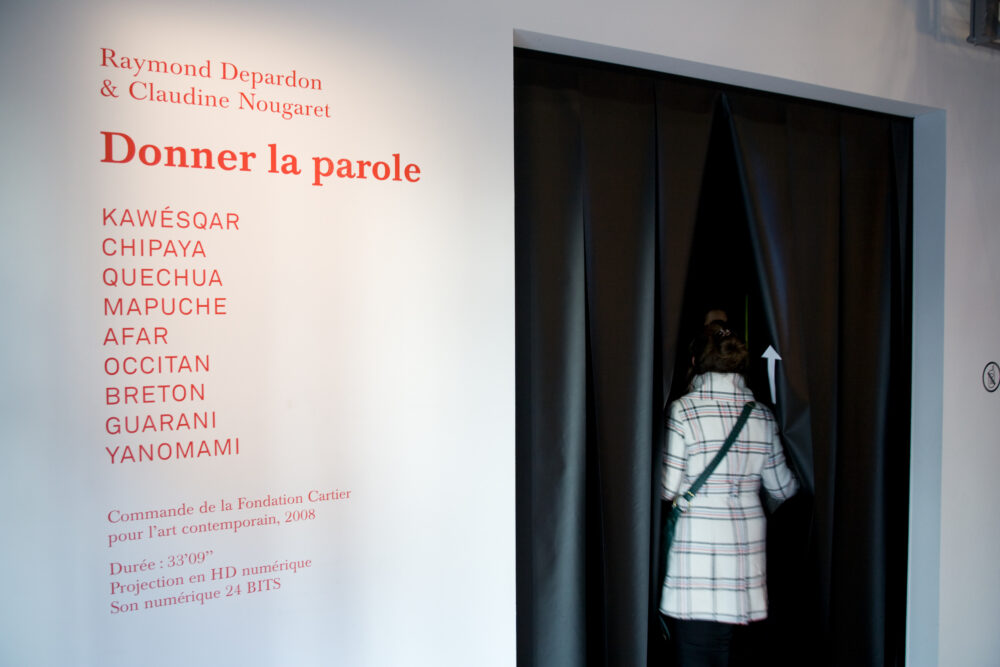Raymond Depardon and I are both concerned with the same question: what is left of the world, of native lands, of the history of the only habitable planet today?Paul Virilio, 2008.
Whereas Raymond Depardon gives a voice to those who wish to live on their land but are threatened with exile, Paul Virilio examines and challenges the very idea of sedentariness in the face of the unprecedented migrations confronting the contemporary world.
Image gallery
The exhibition is, therefore, a confrontation. It is at once a contradictory and complementary dialogue between filmmaker and photographer, Raymond Depardon, and urbanist and philosopher, Paul Virilio. Depardon’s work has often explored the idea of native lands. His interest in mother tongue languages and his capacity to combine both the political and the poetic are clear to anyone familiar with his work. Through his writing, Paul Virilio has spent much of his time working on the notions of speed, exodus, and the disappearance of geographic space.













